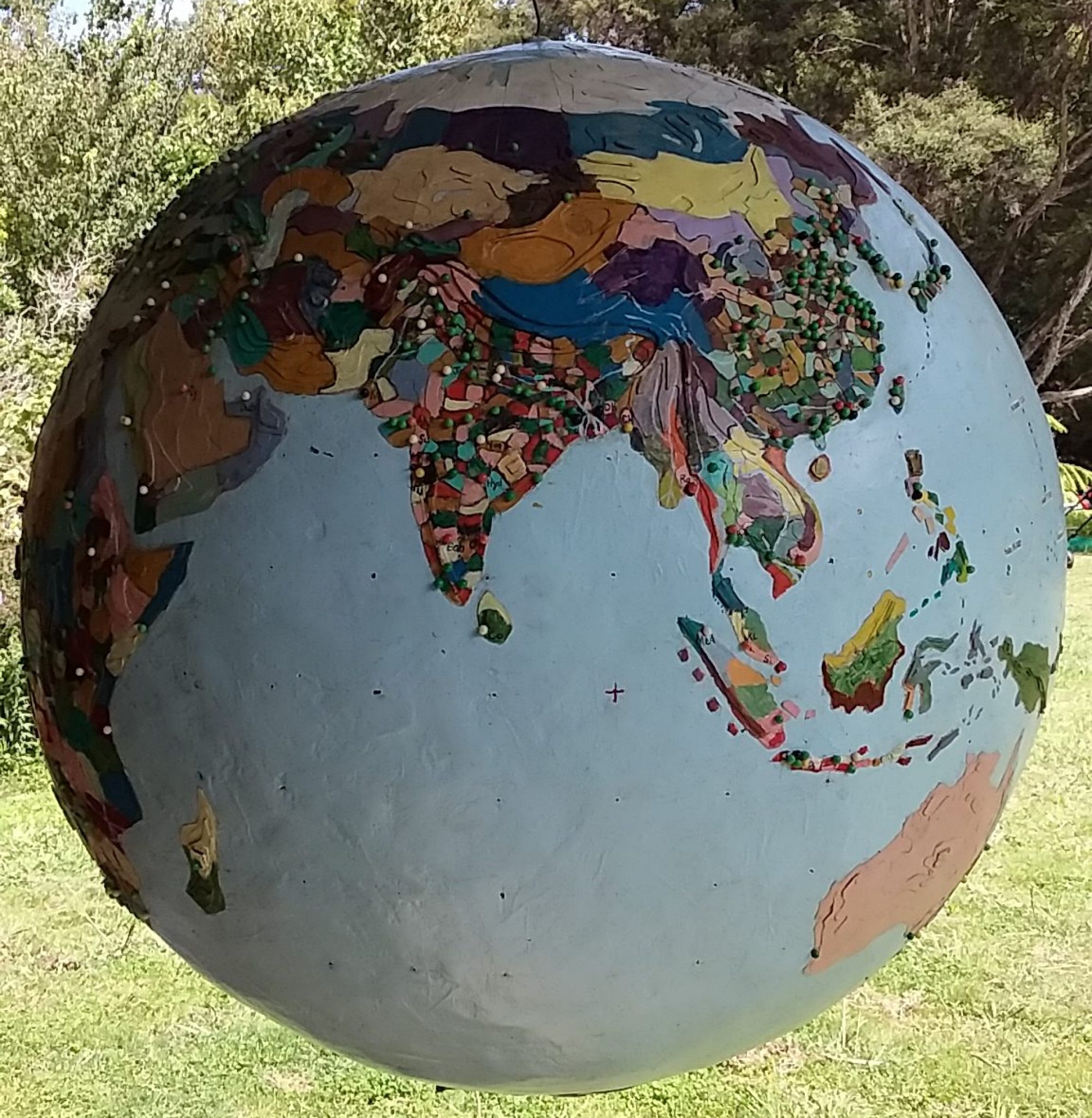My father’s parents’ marriage certificate has them married in “Madioen” (Madiun) East Java in 1918. There is a black and white photo of my twenty-one year old grandmother, in a long, black skirt, standing by a steam train in the American West, travelling to join her intended husband in the Dutch East Indies.
Grandmother Mieke was from the family Ankersmit, who owned the Deventer (Netherlands) cotton factory, and the estate that went with it. Grandfather “Freik” was the son of Abraham Frederikse, an Amsterdam doctor. Freik was not an academic and, being handy with his hands, was sent to the Deventer School for Tropical Agriculture.
A decade ago my travel companion and I passed through Madiun on a train. The Dutch-built railway followed the flats between the volcanoes. Closely spaced villages (kampongs) with orange tile roofs were ringed by fertile rice paddies following what contours there were. Here and there stood tobacco barns and brickworks making roof tiles. Coconut palms and tropical spices, fruits and vegetables filled the spaces between. By all accounts it was paradise in 1920 when Java had a population around 30 million and there were still wild tigers, elephants and rhinos in the teak-forested hills – now the population of Java is approaching 150 million.
The millisphere of Bengawan Solo (2014 population seven million) includes the Madiun River catchment which joins the Bengawan Solo at Ngawi before flowing through Bojonegoro and discharging into the Java Sea just north of Surabaya. The headwaters of the Bengawan Solo itself drains the neighbouring millisphere of Surakarta (Solo), to the west.
The Bengawan Solo is an important site for hominid remains and Ngawi is where Dutch archeologist Eugene Dubois, in 1896, found fossil remains of Pithecanthropus erectus (Java Man). Dated at one million years ago, Java Man is the first evidence of hominids outside Africa or Europe. Zig zag marks on a freshwater clam shell, found nearby, is thought to be the oldest man-made marks in the world.
In 1940, Surakarta musician, Gesang Martohartono composed the song “Bengawan Solo,” which was popular with the Japanese soldiers occupying Indonesia during World War II. The soldiers brought “Bengawan Solo” home to Japan after the war, where it became famous and a hit throughout Asia, then worldwide.
When the Japanese forces arrived in 1942, first Freik was taken away to the men’s camp in Bandung, then Mieke to the women’s camp in Semurang. Their two sons had already gone to the Netherlands for their education and their daughter managed to catch one of the last passenger ships leaving for the United States, where she met her future husband. It was not until after the end of the war that they heard from each other again. By then it was apparent that it was all over for the Dutch in Indonesia and the family dispersed to Holland, Switzerland, California and New Zealand.
In 1948, in the lead up to independence, when Dutch forces still held the major cities, Indonesian factions, positioning themselves to become the new government, clashed in the “Madiun affair”. Sukarno’s republican forces put down an Indonesian Communist Party municipal uprising in Madiun, imprisoning 36,000 and executing 1000 communists. This skirmish finally played itself out in 1965, in “the year of living dangerously”, when Suharto and the army finished off another million “communists”. American agents were involved in both affairs.
Indonesia’s development model under Suharto was one of corruption and joint ventures with foreign companies. Japanese plywood factories and the like went into business with various members of the Suharto oligarchy, who became fabulously wealthy. Tommy Suharto bought a sheep station in the South Island of New Zealand.
The Bengawan Solo, Java’s longest river, was once much longer, extending into Sumatra and Borneo during the last ice age, when sea levels were lower, and, in fact, it once flowed in the opposite direction, before the line of volcanoes coming out of the Java Trench tilted it the other way.
Today the Bengawan Solo Water Resource Management Authority has to cope with annual cycles of flood and drought in an environment subject to intense industrialisation, agricultural development, and population growth. Wet season flooding is compounded by the river’s sediment load from volcanic debris and erosion, including from illegal logging. Industrial pollution and untreated effluent from urban areas means the water is not drinkable like it was only a century ago. Potable water is in critically short supply in the dry season.
A joint venture between ExxonMobil and Indonesia’s Pertamina recently announced significant finds of oil and gas around Bojonegoro. This will enrich a few and further degrade the Bengawan Solo for the millions living along it.

